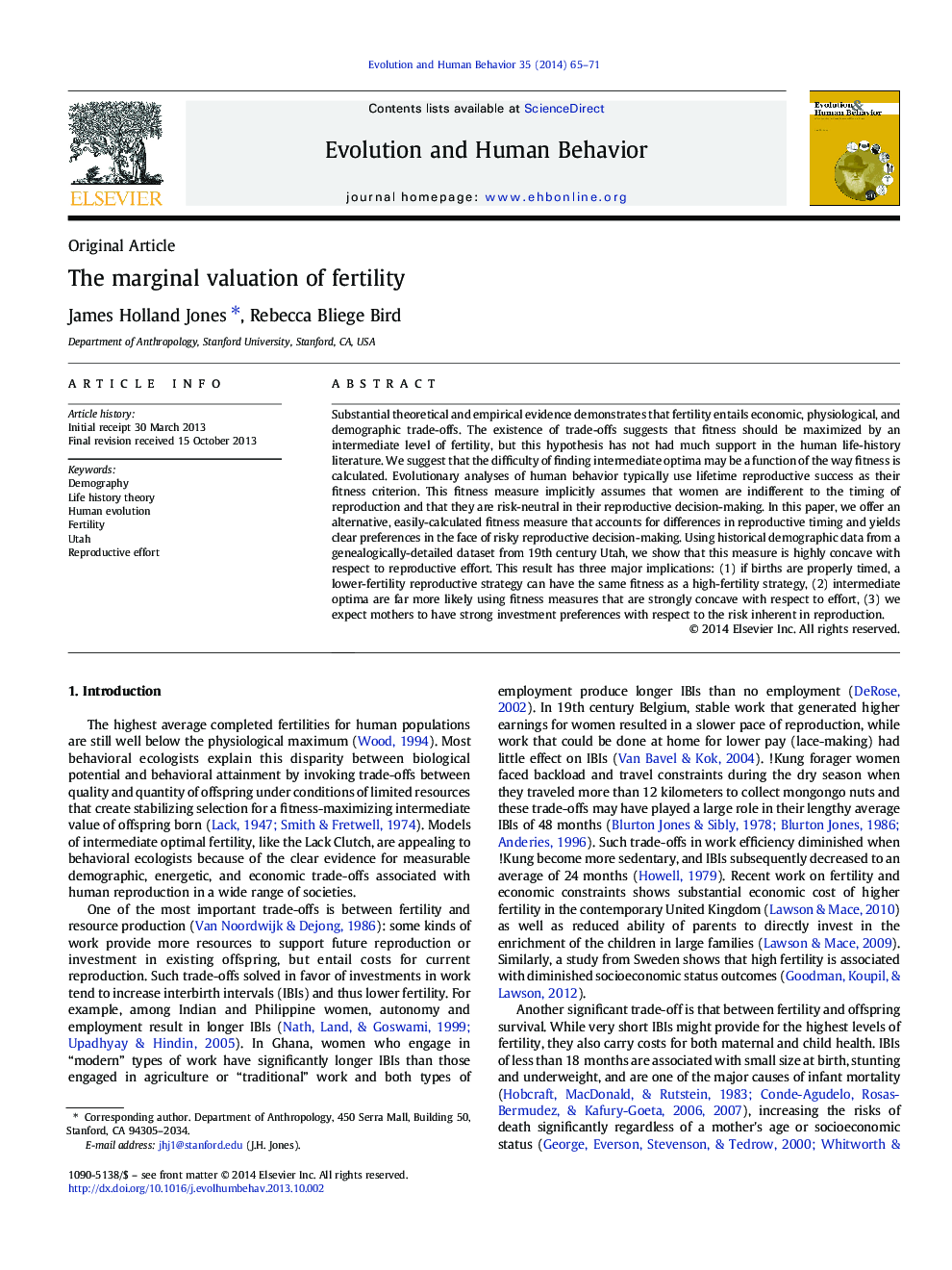| Article ID | Journal | Published Year | Pages | File Type |
|---|---|---|---|---|
| 943148 | Evolution and Human Behavior | 2014 | 7 Pages |
Substantial theoretical and empirical evidence demonstrates that fertility entails economic, physiological, and demographic trade-offs. The existence of trade-offs suggests that fitness should be maximized by an intermediate level of fertility, but this hypothesis has not had much support in the human life-history literature. We suggest that the difficulty of finding intermediate optima may be a function of the way fitness is calculated. Evolutionary analyses of human behavior typically use lifetime reproductive success as their fitness criterion. This fitness measure implicitly assumes that women are indifferent to the timing of reproduction and that they are risk-neutral in their reproductive decision-making. In this paper, we offer an alternative, easily-calculated fitness measure that accounts for differences in reproductive timing and yields clear preferences in the face of risky reproductive decision-making. Using historical demographic data from a genealogically-detailed dataset from 19th century Utah, we show that this measure is highly concave with respect to reproductive effort. This result has three major implications: (1) if births are properly timed, a lower-fertility reproductive strategy can have the same fitness as a high-fertility strategy, (2) intermediate optima are far more likely using fitness measures that are strongly concave with respect to effort, (3) we expect mothers to have strong investment preferences with respect to the risk inherent in reproduction.
